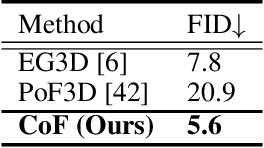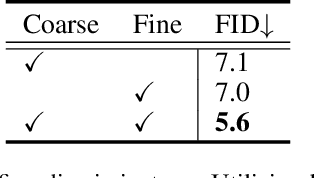Zhenglin Zhou
DreamDPO: Aligning Text-to-3D Generation with Human Preferences via Direct Preference Optimization
Feb 05, 2025Abstract:Text-to-3D generation automates 3D content creation from textual descriptions, which offers transformative potential across various fields. However, existing methods often struggle to align generated content with human preferences, limiting their applicability and flexibility. To address these limitations, in this paper, we propose DreamDPO, an optimization-based framework that integrates human preferences into the 3D generation process, through direct preference optimization. Practically, DreamDPO first constructs pairwise examples, then compare their alignment with human preferences using reward or large multimodal models, and lastly optimizes the 3D representation with a preference-driven loss function. By leveraging pairwise comparison to reflect preferences, DreamDPO reduces reliance on precise pointwise quality evaluations while enabling fine-grained controllability through preference-guided optimization. Experiments demonstrate that DreamDPO achieves competitive results, and provides higher-quality and more controllable 3D content compared to existing methods. The code and models will be open-sourced.
HeadStudio: Text to Animatable Head Avatars with 3D Gaussian Splatting
Feb 09, 2024Abstract:Creating digital avatars from textual prompts has long been a desirable yet challenging task. Despite the promising outcomes obtained through 2D diffusion priors in recent works, current methods face challenges in achieving high-quality and animated avatars effectively. In this paper, we present $\textbf{HeadStudio}$, a novel framework that utilizes 3D Gaussian splatting to generate realistic and animated avatars from text prompts. Our method drives 3D Gaussians semantically to create a flexible and achievable appearance through the intermediate FLAME representation. Specifically, we incorporate the FLAME into both 3D representation and score distillation: 1) FLAME-based 3D Gaussian splatting, driving 3D Gaussian points by rigging each point to a FLAME mesh. 2) FLAME-based score distillation sampling, utilizing FLAME-based fine-grained control signal to guide score distillation from the text prompt. Extensive experiments demonstrate the efficacy of HeadStudio in generating animatable avatars from textual prompts, exhibiting visually appealing appearances. The avatars are capable of rendering high-quality real-time ($\geq 40$ fps) novel views at a resolution of 1024. They can be smoothly controlled by real-world speech and video. We hope that HeadStudio can advance digital avatar creation and that the present method can widely be applied across various domains.
STAR Loss: Reducing Semantic Ambiguity in Facial Landmark Detection
Jun 05, 2023Abstract:Recently, deep learning-based facial landmark detection has achieved significant improvement. However, the semantic ambiguity problem degrades detection performance. Specifically, the semantic ambiguity causes inconsistent annotation and negatively affects the model's convergence, leading to worse accuracy and instability prediction. To solve this problem, we propose a Self-adapTive Ambiguity Reduction (STAR) loss by exploiting the properties of semantic ambiguity. We find that semantic ambiguity results in the anisotropic predicted distribution, which inspires us to use predicted distribution to represent semantic ambiguity. Based on this, we design the STAR loss that measures the anisotropism of the predicted distribution. Compared with the standard regression loss, STAR loss is encouraged to be small when the predicted distribution is anisotropic and thus adaptively mitigates the impact of semantic ambiguity. Moreover, we propose two kinds of eigenvalue restriction methods that could avoid both distribution's abnormal change and the model's premature convergence. Finally, the comprehensive experiments demonstrate that STAR loss outperforms the state-of-the-art methods on three benchmarks, i.e., COFW, 300W, and WFLW, with negligible computation overhead. Code is at https://github.com/ZhenglinZhou/STAR.
StyleAvatar3D: Leveraging Image-Text Diffusion Models for High-Fidelity 3D Avatar Generation
May 31, 2023



Abstract:The recent advancements in image-text diffusion models have stimulated research interest in large-scale 3D generative models. Nevertheless, the limited availability of diverse 3D resources presents significant challenges to learning. In this paper, we present a novel method for generating high-quality, stylized 3D avatars that utilizes pre-trained image-text diffusion models for data generation and a Generative Adversarial Network (GAN)-based 3D generation network for training. Our method leverages the comprehensive priors of appearance and geometry offered by image-text diffusion models to generate multi-view images of avatars in various styles. During data generation, we employ poses extracted from existing 3D models to guide the generation of multi-view images. To address the misalignment between poses and images in data, we investigate view-specific prompts and develop a coarse-to-fine discriminator for GAN training. We also delve into attribute-related prompts to increase the diversity of the generated avatars. Additionally, we develop a latent diffusion model within the style space of StyleGAN to enable the generation of avatars based on image inputs. Our approach demonstrates superior performance over current state-of-the-art methods in terms of visual quality and diversity of the produced avatars.
 Add to Chrome
Add to Chrome Add to Firefox
Add to Firefox Add to Edge
Add to Edge